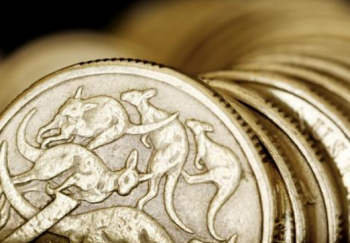
Cash’s hidden value: it’s an option over every asset class
What’s going on … is there nothing to discuss? We recently held our shortest investment committee meeting. I timed it. It went for 22 minutes. What gives?
The impact of history’s greatest monetary experiment is now upon us. Low interest rates, flat yield curves and the pursuit of yield have rendered it difficult for value investors to find interesting new opportunities. Make no mistake we are invested already in a portfolio of extraordinary businesses, generating above average returns on equity, with below average debt and with bright prospects for continued earnings growth. Companies such as Altium, CBL, Challenger Financial, REA, TradeMe, Vocus, and Vita Group have made the grade but finding reasonably priced new opportunities to invest a growing cash pile is challenging.
Recently released, The 2016 Long-term Investing Report, coauthored by the ASX and Russell Investments, has backed up our previously-published concerns that low returns are here to stay.
Citing meagre returns from listed property and cash (1.7 per cent and 3.1 per cent, respectively, for the decade to December 2015), as well as cracks appearing in direct property, and higher expected volatility from shares and bonds, the report suggested investors “seeking to achieve their required rate of return, at a risk level they can tolerate, should consider dynamically managed real return funds to gain exposure to a more diversified investment opportunity and be able to quickly respond to changing market conditions”.
I’d go one step further and suggest building up some cash. Back in 1981, the risk-free rate of return in the US — as represented by five-year treasuries — was 15 per cent. Real rates were close to 5 per cent. To compete with high risk-free rates, assets were priced very cheaply. And the 15 per cent hurdle rate forced companies to invest capital wisely and where necessary restructure. Financial leverage as measured by Total Credit Market Debt to GDP was less than half of what it is today. Back then credit-fuelled growth lay ahead. Today it does not. GFC-response policies have discouraged de-leveraging. In fact leverage has risen.
The period that followed 1981 was one of the greatest bull markets in financial history.
So how can precisely the opposite environment (historically low interest rates, expensive asset prices and historically high levels of debt) to that which existed in 1981, also be a great investment environment? It simply cannot.
Former Soros Funds Management director Stan Druckenmiller in early May observed, “In 1982 the market sold for seven times on depressed earnings and with dozens of rate cuts and productivity improvements ahead. Today we’re at 18 times inflated earnings, with productivity (margins) declining and no further ammo on interest rates. While policy markers have no end game, markets do.” And that brings me back to cash.
We tend to think that cash is safe but it is not. Cash is not a riskfree asset at all. What could be riskier than being guaranteed to lose more purchasing power the longer you hold it? As Warren Buffett explained last year, during the 50 years from 1964 through 2014, the S&P 500 Index returned 11,196 per cent, including reinvested dividends. During those years, the value of a dollar fell by 87 per cent. Investing for long periods in cash is not desirable.
But in the short run cash is like an option over every asset class, with no expiration date and no strike price. Cash provides the option to sweep up a bargain when it becomes available and this must have some value above the fact it earns almost nothing.
If the purpose of an investment portfolio is to grow as well as protect the wealth you’ve accumulated over the years, doesn’t it make sense, if you can afford it, to also hold an option?
At this juncture there is value in holding some cash. Not most of your money, but some.
Roger Montgomery is the founder and Chief Investment Officer of Montgomery Investment Management. To invest with Montgomery, find out more.
Hi Roger, this is the latest from the Future Fund:
Future Fund’s David Neal warns of ‘elevated risks’
• DANIEL PALMER
• The Australian
• 11:20AM June 1, 2016
The head of the nation’s Future Fund has warned of “elevated risks” as the world struggles to fully recover from the global financial crisis, further explaining the fund’s big move into cash over the past year.
David Neal, managing director of Australia’s sovereign wealth fund, said policymakers were not in a position to respond should economic conditions take a turn for the worse, promoting caution at the fund.
“What is different today is the world is ill-equipped to cope with a shock,” Mr Neal said at the Australian Stockbrokers’ Conference in Melbourne.
“Central banks have fired many of their policy bullets — both conventional and unconventional — and with less ammunition they have less scope to respond to new shocks.”
The comments follow a recent move into cash by the Future Fund, which became the biggest single asset class in the fund in March.
The most recent March quarter numbers revealed cash investments at 22.9 per cent of the portfolio, up sharply from 15.1 per cent at the end of September.
Mr Neal revealed today the Fund still held over 20 per cent of its reserves in cash and his views on the current environment suggest no rush to jump into riskier asset classes.
“We see a low growth environment, with low prospective returns, elevated risks and limited capacity for monetary policy to respond should things go wrong,” he said